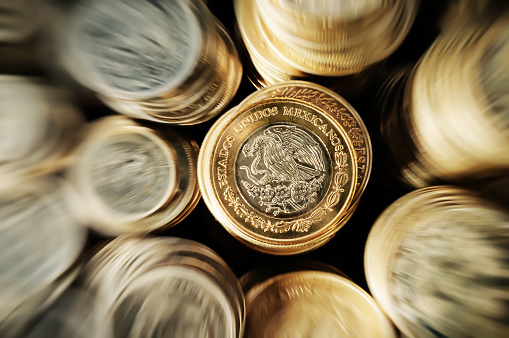The Mexican Economy
The Mexican economy is a diverse one. It combines many different sectors such as manufacturing, construction, and agriculture. In 1994, it had a real GDP growth of four percent. This growth was attributed to the relaxation of monetary policy and the United States’ ratification of the North American Free Trade Agreement (NAFTA). In 1994, the economy consisted of 22 percent of the services and commerce sectors, 20 percent of the manufacturing sector, and 10 percent of the agriculture, forestry, and fishing sector. Other sectors include transport and communications, mining, and electricity and gas.
Economic growth
During the 1970s, Mexico experienced rapid economic growth. However, the country’s investment climate, poor export industrial sector, and fiscal mismanagement gradually eroded that growth. Between 1976 and 1982, GDP growth slowed to less than 6 percent a year. In the interim, the economy fluctuated widely, with periods of rapid growth followed by sharp recessions. In 1976, the government, under President Jose Lopez Portillo, borrowed heavily from abroad and issued bonds with negative real interest rates. The result was an economy that was not able to pay back its debts, and its debts soared.
In the 1990s, Mexico experienced an economic contraction of 7 percent. Private consumption grew at a slower pace than public consumption. Investment, manufacturing, and construction industries experienced contractions of about 2 percent a year. Meanwhile, public and private investment fell by 4 percent or 11 percent. These trends can be attributed to the rapid growth of the informal economy and the resulting transition from good to bad jobs.
The growth of the economy depends on two factors: aggregate supply and nominal demand. The Mexican government, however, has given little attention to demand since 1982. It suffers from a “Fear of Growth,” a condition that makes the government ignore economic growth. This situation has led to slow economic growth.
Peso devaluation
The peso devaluation in Mexico caused a crisis. It was the first international financial crisis caused by a sudden devaluation of a currency. This crisis was caused by a sudden devaluation of the peso against the U.S. dollar in December 1994. This led to massive capital flight and created a serious financial crisis.
This crisis has attracted the attention of the IMF, which orchestrates bailouts for countries with financial crises. The IMF has a history of providing aid to developing countries with falling exchange rates to help them repay their foreign creditors. It also contributed almost $18 billion to the Clinton administration’s bailout of Wall Street interests. A peso devaluation in Mexico threatened these interests and would have cost them billions.
The crisis exacerbated existing problems in Mexico. The peso devalued, and the cost of imported goods and services rose sharply. In addition to increased import prices, the peso’s inflation rate rose as well. Consequently, Mexico was forced to rely on its reserves to cover its debts. Several years later, the Mexican government began a process of transitioning its economy to a market-oriented economic model, privatizing state-owned enterprises, deregulating industries, and reducing trade barriers. The process took a long time to reach a level where the peso appreciated to a more stable value.
Inflation
Inflation in Mexico’s economy is high, and the country is facing several challenges. The Mexican peso has strengthened against the US dollar in the past two months, and the country’s manufacturing sector is expanding. However, the country’s inflation is still high, and the country is grappling with rising costs and falling income.
Despite the risks, Mexico is well-positioned to navigate a volatile environment. The impact of a potential pandemic may compound the country’s long-standing problems of low growth and rising inequality. As such, growth in the country is projected to slow in the coming quarters, and inflation is expected to reach a plateau in the second half of 2022. From there, inflation will gradually decelerate as cost-push factors feed into prices. As a result, the balance of inflation and growth risks is slightly in favor of the latter.
Meanwhile, the Bank of Mexico is widely expected to raise its benchmark interest rate by 75 basis points this week. The central bank is targeting an annual inflation rate of 8.41%. The annual rate reached 8.7% in September and 8.41% in October, both above the target.
Trade restrictions
Although Mexico is a large trading nation with a wide range of trading partners, the country faces several challenges. It has had a history of corruption, which makes foreign investors wary. Additionally, Mexico’s free-trade agreements with many of its trading partners have high tariffs that discourage new countries from initiating trade.
In recent years, however, Mexico has begun to remove barriers to trade. As a result, exports of clothing, footwear, and textiles have increased. Meanwhile, the intervention in the automotive sector has weakened. While the economic outlook for Mexico remains uncertain, the country has already made important strides in opening up its economy.
Since joining GATT in 1986, Mexico has lowered its tariffs significantly. Its bound ceiling rate was reduced from fifty percent to thirty-five per cent in the Uruguay Round. But there are still a number of trade restrictions that remain in place. The country is also subject to anti-dumping measures, which have reduced the competitiveness of Mexican exporters.
Mexico’s exports make up 18.6% of the Mexican economy. Some of its primary exports include vehicles, electronic equipment, machines, pumps, and oil. Mexico ranks fourth globally in motor vehicle exports and parts.
Manufacturing industry
Manufacturing in Mexico provides companies with a range of benefits, from lowering costs to strengthening operational resiliency. Many manufacturing companies that previously focused on Southeast Asia are now turning to Mexico as a cheaper and more efficient alternative. Companies are also finding it easier to build local supplier networks than in other locations. In addition, the country’s proximity to the U.S. market allows for faster shipping and communication.
Mexico’s industrial base ranges from small enterprises producing tortillas, bakeries, and mills to larger conglomerates producing automotive parts, pharmaceutical laboratories, and more. In addition to manufacturing tortillas, textiles, and food products, the manufacturing sector is also experiencing a surge in computer production, and the country is a major supplier of computers to the United States.
The manufacturing industry in Mexico generates billions of dollars in revenue each year. In January to May of this year, it registered a 10.5% increase in sales abroad. This translates to nearly $57 billion in sales for Mexican companies abroad.
Petroleum industry
The petroleum industry is an important component of Mexico’s economy. Despite its dependency on oil and gas, the country is attempting to diversify its energy sources. However, Mexico is likely to remain dependent on oil and natural gas for the foreseeable future. As such, Mexico has an interest in environmentally responsible hydrocarbon development.
Recent energy reforms have boosted investment in the sector. This is expected to spur renewed petroleum production and meet the country’s increasing demand. Despite recent setbacks, the industry has shown promise. Mexico’s oil and gas industry is expected to contribute 3.3 percent of the country’s GDP in 2021.
The Mexican oil industry generates nearly ten percent of Mexico’s export revenues. This is a sharp decrease from the 81 percent share it held in 1982. In 1990, the oil sector contributed 1.3 million bpd of crude oil exports to Mexico. The government attempted to increase the capacity of existing refineries and build new ones to increase the value of the crude oil. However, financial issues prevented Pemex from boosting its production capacity and forced Mexico to import more oil. In 1990, Mexico’s oil export revenues increased to US$10 billion, but dropped by fifteen percent in 1991.
Oil revenue financed the construction of offshore drilling platforms, onshore refineries, and other infrastructure. The company also bought foreign technical expertise and capital goods. As a result of these investments, the oil output of Mexico’s oil industry increased from 400 million barrels per day in 1977 to more than one billion barrels a year by 1982. Petroleum exports remained steady at 1.4 million barrels per day, while total production increased from 2.7 million to 3.1 million barrels per day.
Road network
Upgrading the road network is one of the top priorities for Mexico’s current government, headed by President Andres Manuel Lopez Obrador, who is popularly known as AMLO. The country has become a center for international trade, and it needs improved connectivity between its ports and centers of manufacturing to sustain growth.
Compared to its peers, Mexico does reasonably well when it comes to road network quality. However, when this variable is adjusted for, the country underperforms. This is despite a huge increase in road network stock. Although Mexico performs better than peer countries, its overall infrastructure still lags behind the world mean.
The road network is an essential part of Mexico’s economy. It enables people to move about the country more easily, and allows businesses to expand and modernise their operations. It is also a key component of the country’s National Infrastructure Plan, which promises to invest nearly seven trillion pesos over the next five years to create an advanced transportation system.
However, the country’s road network is extremely vulnerable to extreme weather conditions. A recent study showed that up to 105,000 sites in Mexico were at risk of flooding. In addition, extreme temperatures and climate change can damage road networks.



